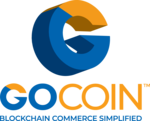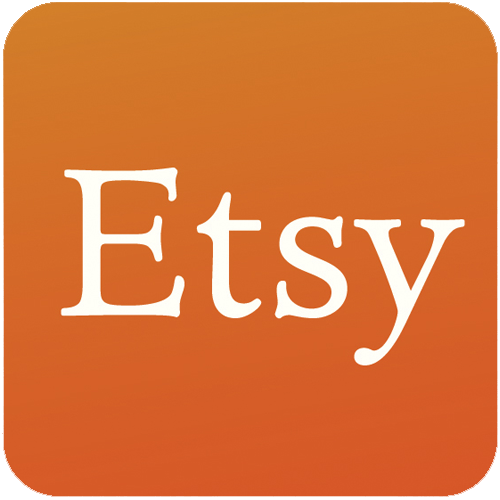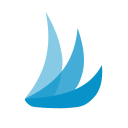
How I Started A $15K/Month Hand-Drawn Embroidery Samplers Business
Hello! Who are you and what business did you start?
Hi! I’m Rebecca Ringquist. I’m an artist and entrepreneur living in Portland, Oregon.

In 2010 I was invited to teach a short workshop at Squam Lake, and I decided to design and print some embroidery samplers to take with me for the end of session craft sale. By chance, there were a few prominent bloggers at the end of the session sale who bought my sampler and posted about it. I returned from teaching to an inbox full of messages regarding that Original Sampler.
At the time I didn’t have any social media presence besides my personal art website. I was on vacation when the requests started streaming in, so I quickly opened a rudimentary Etsy shop using a borrowed dial-up connection.
Ten years later, that Original Sampler is by far the best seller and comprises at least 25% of yearly sales annually. Dropcloth Samplers started on a whim, but is now my full-time job, grossing over 15K a month.
What's your backstory and how did you come up with the idea?
I started my career as an academic art professor at The School of the Art Institute of Chicago in the Fiber and Material Studies Department. I taught embroidery and introductory textiles classes. Originally, I fell in love with embroidery through the backdoor when I took a feminist art history class and learned about the social history of stitching. Along the way, I fell in love with the process, and have been interested in the history of sampler making from a feminist perspective ever since.
As a business owner, I feel very fortunate to have sort of stumbled into this line of work. I’m so much happier now that I was an academic, and I certainly have a lot more free time to spend with my family.
After getting my MFA at the School of the Art Institute of Chicago, I stayed on and taught there for seven years. In addition to my academic teaching work, I also taught embroidery and drawing workshops around the country at places like Haystack and Penland School of Crafts. While living in Chicago, I was also the director of the textile department at a local art center, where I taught screen printing, which is where I printed the first hundred runs or so of Dropcloth Samplers.
Take us through the process of designing, prototyping, and manufacturing your first product.
I printed the first samplers with no intention of starting a business. I was invited to sell a few things at an end of session sale at an art retreat, and I knew that my artwork would be too high a price point. I printed those first samplers on white sheets that I bought at the thrift store with black ink since that’s the color I had the most of. The design was hand-drawn on bristol paper and converted into transparency at a local copy shop before I burned a screen with that image.
Every single sampler was hand screen printed, cut, and folded by me. There was no packaging because I wasn’t thinking AT ALL that it would be a business or even a long term project.

A year into Dropcloth Samplers, it was still very much a side project. When my partner got a job in New York City, I moved with her and lost my access to screen printing. I wasn’t sure what would become of the samplers. However! I found myself in NYC without a job, so I decided to find a printer to work with that could produce yardage of my sampler designs. I’m so glad I did because the prints they produce are more consistent and of better quality than the ones I was printing myself back in Chicago.
About a year and a half after I printed and sold the first samplers, I decided that packaging might be a good idea, because fabric shops were starting to reach out to inquire about purchasing the designs to sell, and I realized that without packaging, I wouldn’t have a wholesale angle. The first packaging I made was hand-drawn by me in a style similar to the samplers and photocopied on card stock (also by me) in a local copy shop.
Each sampler had to be folded and ironed in a very precise way to fit into the packaging. It was very labor-intensive and not only that, but in hindsight, a very poor design choice because the packaging didn’t show what the finished (embroidered) project would look like, and bright colors and cheerful designs are part of what makes my product unique.

About a year after making that first run of packaging I hired a designer to revamp the packaging. The packaging launched right around the same time that my book (Rebecca Ringquist’s Embroidery Workshops, Abrams/STC Crafts) was released into the world, so we decided to adopt the same font as the book cover. I hired someone who I met through a friend of a friend who had interned at Anthropologie, who had a style that I liked very much, and helped me develop two templates that I could apply to all of my designs. It’s worked out really well. I recently changed up the outer wrapper to a biodegradable bag, but the inner folder that contains all my company info has stayed pretty much the same over the last 7 years or so.

Although the printing process for the samplers has changed significantly over the years, the designs are created in the same way. They are all hand-drawn on bristol paper in my studio, by me. I spend a lot of time sketching and developing ideas in my sketchbooks, and over time design ideas emerge and get fleshed out on better paper. Eventually, they get scanned and edited by my graphic designer and translated into files that get printed on fabric.
Describe the process of launching the business.
My launch was very much accidental. I sold the samplers at a small art sale where several bloggers bought them and blasted them into the internet by way of their craft blogs. In a lot of ways, I was in the right place at the right time. I had no social media presence, no plan to launch a business, and no strategy about how to scale up from a tiny project started with thrift store sheets.

The spring after the samplers launched, I was lucky to be introduced to one of the producers of Creativebug, and we met for lunch. They asked me to be one of the original artists on the (then a startup) site, and I flew to San Francisco to film a workshop based on the Original Sampler. That online video workshop catapulted my business into the living rooms of a huge group of new customers. I’ve since filmed ten more workshops with Creativebug, three of which are based on Dropcloth Samplers.

We have a great symbiotic relationship with Creativebug, since most people that take the workshops buy the samplers from my shop, and visa versa. A Creativebug postcard gets tucked in with every order, and a link to my workshops is included in the Dropcloth Samplers packaging.

Since launch, what has worked to attract and retain customers?
Since the start of my business, I have only paid for a handful of advertisements, and honestly, the most consistent way to get the word out about new products and Dropcloth Sampler projects has been Instagram.
If you’re just starting, I recommend staying as scrappy as possible and avoiding all unnecessary expenses.
In addition to showing pictures of what I’m making on Instagram, I also show pictures of things that are adjacent to my embroidery business. My sketchbooks, sewing projects that I’m working on in my spare time in the studio, etc. I also try to be active in the comments section and have worked really hard to build a community of embroiderers. The hashtag #dropclothsamplers has over 5K entries to date, and each time one pops up in my feed it gives me a little adrenaline boost.

How are you doing today and what does the future look like?
It feels strange and a bit odd to say, but the global pandemic has been very good for my business. People are looking for something to do while at home, and more importantly, people are looking for something calming to do, and embroidery certainly fits that bill. 2020 has been Dropcloth Samplers’ best year to date, and the profit this year has been more than doubling the record best year in the past.
I have two small kids that (due to COVID-19) are home with me full time, so my hours spent working on Dropcloth Samplers are very limited. I keep a running categorized to-do list that has a short term, long term, and delegatable tasks. Currently, a lot of items are in the long term category, and I look forward to tackling some of those if/when things get somewhat back to normal.
The first two action items on the long term list are to build a Shopify site and to expand wholesale.
As a working parent, one of the things that I’ve worked to get very good at is understanding what I can and can’t do with kids around. Many parts of my business are monotonous and easy, and often those are delegatable. Others require focus and my own attention, and those get done after my kids are asleep or otherwise occupied.
Dropcloth Samplers exists as a crossover category in the craft world, and make an excellent add on activity/ purchase for both quilting and knitting shops. I’m looking forward to making a big push into wholesale soon. I see it as a big opportunity for scaling my business that I haven’t had the bandwidth for, but hopefully will as schools open back up in a (fingers crossed) vaccinated world.
Right now most of my sales are through Etsy, which takes a larger percentage than I would like, but in turn, also drives a lot of sales, so I’m reluctant to sever that relationship/ sales platform. However, I’m looking forward to adding a Shopify site and being able to customize a few things and expand my offerings, as well as integrating my Creativebug content. I have no plans to sever ties with Etsy.

Through starting the business, have you learned anything particularly helpful or advantageous?
As a business owner, I feel very fortunate to have sort of stumbled into this line of work. I’m so much happier now that I was an academic, and I certainly have a lot more free time to spend with my family. However, I’ve learned a lot of lessons in the last ten years.
Two truisms about me are that I am frugal and stubborn to a fault. It took me eight years of running Dropcloth Samplers to admit to myself that I needed to hire an assistant to manage shipping and handling, and another six months after that to hire someone to handle packaging. Those two decisions were fundamental, essential moves that helped fuel this year’s growth. I currently have five employees.
Similarly, a few years ago I spent many months struggling to learn Adobe Illustrator to edit my hand-drawn designs. After a lot of thought and a lot of banging my head on the wall, I hired a graphic designer who now edits all my drawings and manages packaging design. That was a transformational decision, and it’s a huge relief (not to mention a major productivity boost) to now be focused solely on design and marketing. Not only am I grateful for her help technically, but it’s been amazing to have a trusted voice to bounce ideas off of.
Small things held me up similarly in the beginning. For example, it took me two years to admit to myself that a rotary cutter would make cutting out the samplers easier. Two years of scissor induced hand strain later, I made the purchase and literally laughed out loud at what a huge difference it made.
What platform/tools do you use for your business?
I use Etsy as my primary sales platform. For the relatively small wholesale arm of Dropcloth Samplers, I use Paypal for my invoicing. I will be transitioning to Shopify next year. In the past year, I have started paying Etsy for advertising as a way of boosting my listings and increasing their SEO. I have found those to be very effective.
I use Tailwind to schedule Instagram and Facebook posts. I find their planners useful and their recommended hashtags have helped me boost my follower numbers. I hate writing Instagram content on my smartphone, and love being able to create and edit content once a week on my desktop vs every day on my tiny little phone keyboard.
I use Instagram as a community builder, image sharing platform, and advertising site. Very occasionally I pay for Instagram ads, but I don’t find them to be particularly effective at boosting sales. They do, however, seem to boost numbers, which in the long run is effective at boosting sales.
What have been the most influential books, podcasts, or other resources?
As an artist, I find that people often assume I am bad at business and not making very much money. Although I very much identify as an artist and spend a lot of time drawing, I’m most often listening to business podcasts while I’m working on my sketchbooks. I love How I Built This and hope to one day attend one of their in-person summits.
As I mentioned earlier, I spend a lot of time on Instagram by way of marketing my products, but I also spend time on Instagram looking at other businesses that are either similar or adjacent to mine. I’m always curious about how other people are marketing their goods and am often looking for opportunities to collaborate with other small businesses to promote each others’ endeavors.
I try not to buy into scarcity mentalities, and try to embrace abundance. There’s a local donut shop in my neighborhood that uses the tagline #communitynotcompetition, and I have taken that to heart, reaching out to businesses that are similar to mine, and trying to create connections to help one another out. It can be lonely running a small business, and I always relish the chance to talk to someone else who is in similar trenches.
Advice for other entrepreneurs who want to get started or are just starting?
My best advice is to take advantage of social media as a means of getting your work out there. I’ve yet to spend more than a few hundred dollars a year on marketing. Through a lot of hard work, I’ve managed to get the word out about Dropcloth Samplers.
If you’re just starting, I recommend staying as scrappy as possible and avoiding all unnecessary expenses.
Where can we go to learn more?
If you have any questions or comments, drop a comment below!

Download the report and join our email newsletter packed with business ideas and money-making opportunities, backed by real-life case studies.

Download the report and join our email newsletter packed with business ideas and money-making opportunities, backed by real-life case studies.

Download the report and join our email newsletter packed with business ideas and money-making opportunities, backed by real-life case studies.

Download the report and join our email newsletter packed with business ideas and money-making opportunities, backed by real-life case studies.

Download the report and join our email newsletter packed with business ideas and money-making opportunities, backed by real-life case studies.

Download the report and join our email newsletter packed with business ideas and money-making opportunities, backed by real-life case studies.

Download the report and join our email newsletter packed with business ideas and money-making opportunities, backed by real-life case studies.

Download the report and join our email newsletter packed with business ideas and money-making opportunities, backed by real-life case studies.

















